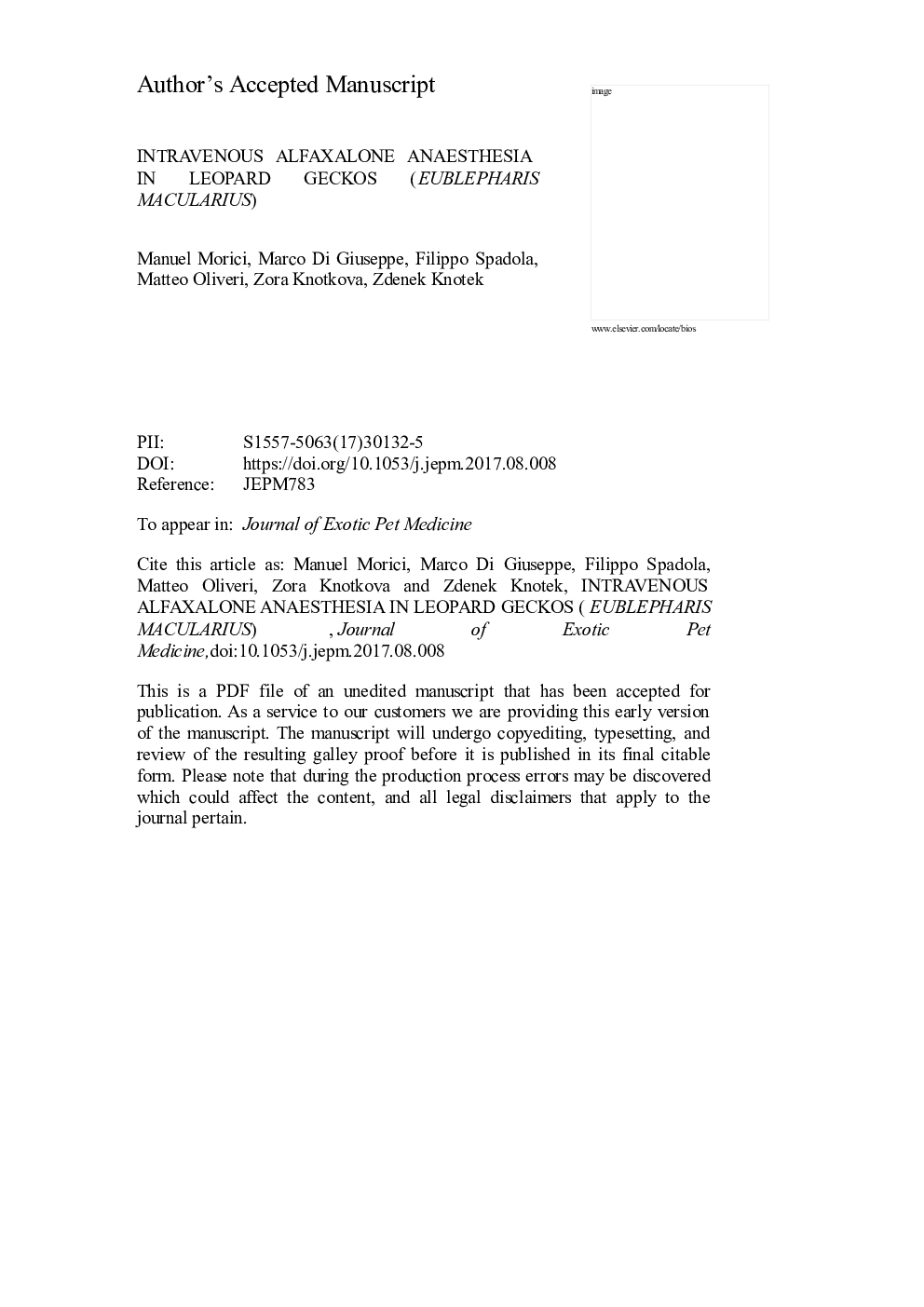| Article ID | Journal | Published Year | Pages | File Type |
|---|---|---|---|---|
| 8483703 | Journal of Exotic Pet Medicine | 2018 | 12 Pages |
Abstract
Intravenous alfaxalone, administered at a dose of 5 mg/kg in the jugular vein, was evaluated in 20 leopard geckos (Eublepharis macularius) to ascertain its ability to provide anesthesia. The induction time, time to loss of mandibular tone, interval of deep anesthesia, and full recovery time were 27.5 ± 30.7 seconds (10 to 56 seconds), 1.3 ± 1.4 minutes (11 seconds to 4 minutes), 12.5 ± 2.2 minutes (11.11 to 15.39 minutes), and 18.8 ± 12.1 minutes (10.4 to 52.31 minutes), respectively. A significant reduction in heart rate (74 ± 12.9 beats/minute) was recorded between 2 and 24 minutes after alfaxalone administration. A significant decrease in respiratory rate (26.8 ± 10.1 breaths/minute) was recorded 2 minutes after alfaxalone administration, and respiratory rate remained lower than the basal rate (31.4 ± 3.1 breaths/minute) for 24 minutes but without statistical significance. The intravenous administration of alfaxalone in leopard geckos achieved a rapid onset of anesthesia and a suitable recovery time. Based on this investigation, an afaxalone dose of 5 mg/kg intravenously proved to be suitable for sedation before tracheal intubation. Moreover, the administration route via the jugular vein, was acceptable in leopard geckos; a species in which other venipuncture sites can be challenging or inaccessible.
Related Topics
Life Sciences
Agricultural and Biological Sciences
Animal Science and Zoology
Authors
Manuel DVM, PhD, GpCert (ExAP), Marco DVM, PhD, GpCert (ExAP), Filippo DVM, PhD, Matteo DVM, PhD, Zora DVM, PhD, Zdenek DVM, PhD, Dip. ECZM (Herpetology),
